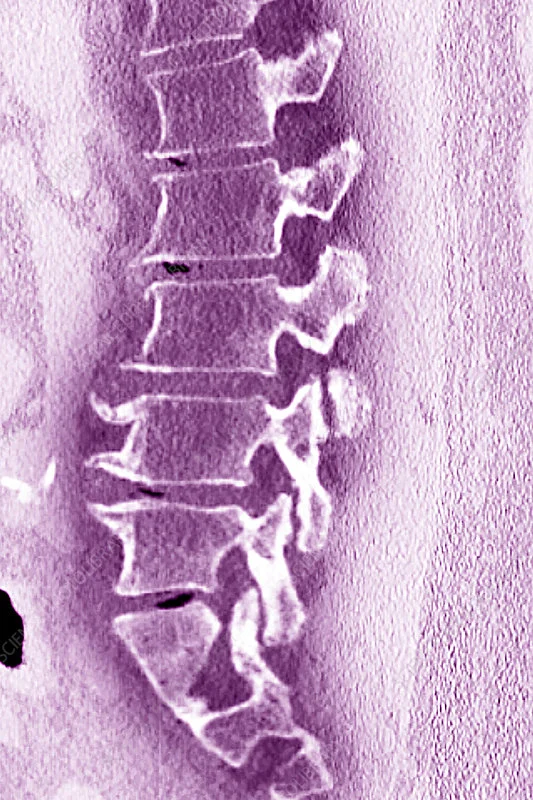Degenerative disc disease (DDD) is a condition that affects the spinal discs, which are the cushions between the vertebrae that make up the spine. The disease is a natural part of aging, but can also be caused by injury or trauma to the spine. DDD is a very common condition and can cause a range of symptoms and problems for those who suffer from it.
Causes of Degenerative Disc Disease
Degenerative disc disease is caused by a combination of factors, including the natural aging process, injury, and genetic factors. The discs in the spine are made up of a tough outer layer called the annulus fibrosus, and a soft gel-like center called the nucleus pulposus. As people age, the discs lose water and become less flexible, which can cause the outer layer to crack or tear. This can cause the nucleus pulposus to push through the annulus fibrosus, which can put pressure on the nerves and lead to pain and other symptoms.
Other causes of degenerative disc disease include injury to the spine, such as from a car accident or sports injury, and genetic factors. People with a family history of degenerative disc disease may be more likely to develop the condition.

Symptoms and Problems of Degenerative Disc Disease
The symptoms of degenerative disc disease can vary depending on the severity of the condition and where the affected disc is located. Some common symptoms include:
- Back pain that is worse when sitting, bending, or lifting
- Numbness or tingling in the arms or legs
- Weakness in the legs
- Difficulty walking or standing for long periods of time
- Pain that radiates down the legs
Degenerative disc disease can also cause problems with mobility, and can make it difficult for people to perform daily activities like walking, bending, or lifting. In severe cases, the condition can cause loss of bladder or bowel control.
Usual Treatment Options
Treatment options for degenerative disc disease depend on the severity of the condition and the specific symptoms that the patient is experiencing. Some common treatment options include:
- Physical therapy: This can include exercises to strengthen the muscles in the back and improve flexibility and range of motion.
- Pain medication: Over-the-counter or prescription pain medication may be used to manage pain and reduce inflammation.
- Steroid injections: These can be used to reduce inflammation and provide pain relief.
- Surgery: In severe cases, surgery may be required to remove the damaged disc and replace it with an artificial disc.
Chiropractic Care for Degenerative Disc Disease
Chiropractic care is a non-invasive treatment option that can be very effective for people with degenerative disc disease. Chiropractors use a variety of techniques to reduce pain and improve range of motion, including spinal manipulation, massage, and stretching.
Spinal manipulation involves the use of precise, gentle force to adjust the spine and improve alignment. This can help to relieve pressure on the affected disc and reduce pain, even pain that radiates to the buttock or down the leg. Massage and stretching can also help to improve circulation and reduce inflammation.
Chiropractic care is a safe and effective treatment option for degenerative disc disease, and has no to minimal side-effects. It is also less expensive than many other treatment options, and can be a good choice for people who want to avoid surgery or other invasive procedures.
Chiropractic Care Utilizing Zone Technique for Degenerative Disc Disease
Any Zone Technique healer, including Dr. Post, knows exactly what to do for any condition walking into the office, including degenerative disc disease. Since Zone Technique is able to unlock and unleash the powerful healing ability withing your body, your healing results will be significantly better than any other healing technique available today. Whether you have or someone else you know has acute degenerative disc disease, balancing the body by utilizing Zone Technique will heal your body on a very deep level. Zone Technique healing is natural, effective, and permanent so that you will heal completely, function great and no longer have pain. You can be totally healthy again – feeling great and functioning perfectly from head to toe every day of the year!
If you don’t live close enough to see Dr. Post, search for a certified Zone Technique healer closer to you by searching the ZONE TECHNIQUE PRACTITIONER DIRECTORY. You owe it to yourself to take action so that you can heal and feel awesome again.
Conclusion
In conclusion, degenerative disc disease is a common condition that affects the spinal discs, and can cause a range of symptoms and problems. While there are many treatment options available, chiropractic care can be a very effective option for reducing pain, increasing range of motion, and improving overall quality of life. If you are suffering from degenerative disc disease, consider talking to a chiropractor to see if this treatment option is right for you.

